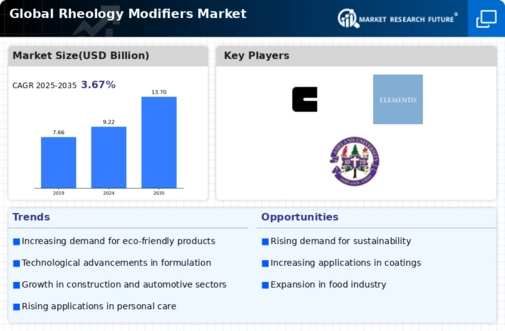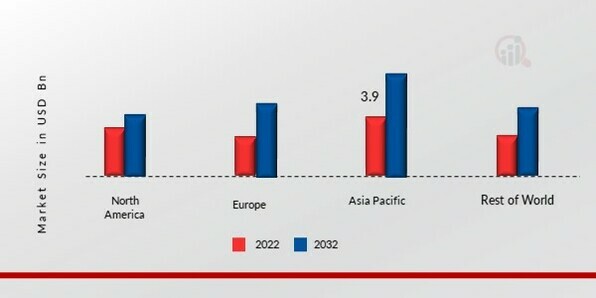Market Share
Rheology Modifiers Market Share Analysis
In the Rheology Modifiers Market, companies implement a range of strategic initiatives to establish a strong market presence and navigate the competitive landscape. As these modifiers find applications in diverse industries such as paints and coatings, cosmetics, and construction, strategic positioning is crucial for success. The following key pointers outline the market share positioning strategies employed in the Rheology Modifiers industry:
Innovative Product Development: Companies prioritize innovation in the development of rheology modifiers. Investing in research and development enables the creation of modifiers with enhanced rheological properties, providing advantages such as improved viscosity control, stability, and application-specific functionalities. Innovation serves as a differentiator in a market where product performance is paramount.
Application-Specific Formulations: Recognizing the varied applications of rheology modifiers in different industries, companies tailor formulations to meet specific needs. Customizing modifiers for applications in paints, cosmetics, or adhesives ensures that they address the unique requirements of each sector, enhancing their market relevance.
Strategic Partnerships and Collaborations: Collaborative efforts with suppliers, manufacturers, or industry partners are common strategies. Forming strategic alliances allows companies to access complementary resources, share expertise, and accelerate innovation, contributing to a more robust market position.
Global Market Expansion: Companies explore opportunities for global expansion to tap into new markets and diversify their customer base. Expanding operations internationally not only broadens market reach but also helps companies adapt to diverse regional preferences, regulations, and economic conditions.
Sustainability Initiatives: With a growing emphasis on sustainability, companies in the rheology modifiers market are incorporating eco-friendly practices. Developing environmentally friendly modifiers, promoting sustainable sourcing, and reducing environmental impact can appeal to environmentally conscious customers and align with market trends.
Brand Building and Marketing: Establishing a strong brand presence is vital for market positioning. Effective branding, marketing campaigns, and communication strategies help create awareness about rheology modifier products, build customer trust, and differentiate companies in a competitive market.
Technological Advancements and Digitalization: Staying at the forefront of technological advancements is imperative. Companies that invest in digital technologies and advanced manufacturing processes can gain a competitive edge, offering precise and efficient rheology modifiers that meet the evolving needs of the market.
Customer Relationship Management (CRM): Building and maintaining strong relationships with customers are essential. Excellent customer service, technical support, and proactive engagement contribute to customer satisfaction, fostering loyalty and repeat business.
Regulatory Compliance and Quality Assurance: Adhering to stringent regulatory standards and ensuring product quality are fundamental strategies. Companies that prioritize compliance demonstrate commitment to quality and safety, building trust with customers and regulatory authorities.
Cost Efficiency and Competitive Pricing: Some companies adopt a cost leadership strategy by focusing on operational efficiency and cost-effective production processes. Offering rheology modifiers at competitive prices can attract a broader customer base and secure a significant share of the market.







Leave a Comment